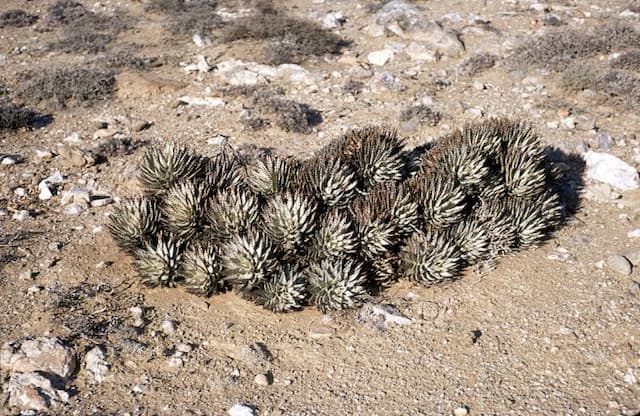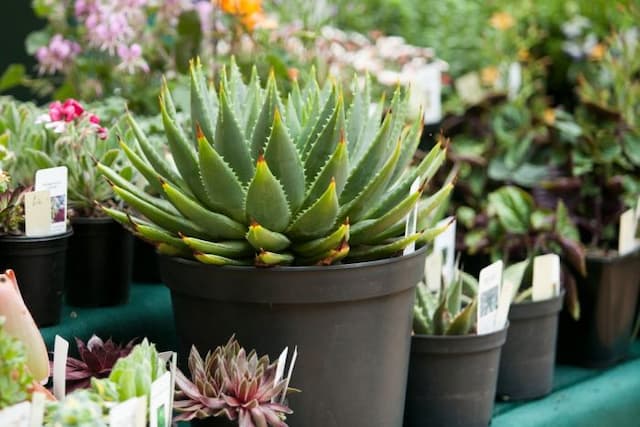Red-hot poker 'John Benary' Kniphofia 'John Benary'

ABOUT
'John Benary' is a very strongly-growing deciduous perennial, up to 1.5-2m tall, forming a large clump of long, narrow, grass-like leaves, with rich orange-red, tubular flowers in long spikes, from red buds
About this plant
 Names
NamesFamily
Asphodelaceae
Synonyms
Red Hot Poker, Torch Lily, Poker Plant
Common names
Kniphofia 'John Benary'.
 Characteristics
CharacteristicsLife cycle
Perennials
Foliage type
Evergreen
Color of leaves
Green
Flower color
Mixed
Height
3-4 feet (0.9-1.2 meters)
Spread
1-2 feet (0.3-0.6 meters)
Plant type
Herb
Hardiness zones
5-9
Native area
South Africa
Benefits
 General Benefits
General Benefits- Aesthetic Appeal: Kniphofia 'John Benary', known as Red Hot Poker, has showy, bright red to orange flower spikes that add dramatic color to garden landscapes.
- Attracts Pollinators: The vibrant blooms attract hummingbirds, bees, and butterflies, which help to pollinate surrounding plants.
- Drought Tolerance: Once established, Red Hot Pokers are drought-tolerant, making them suitable for xeriscaping and low-water-use landscapes.
- Easy to Grow: This plant is relatively low-maintenance, adapting well to a range of soil types and requiring minimal care once established.
- Long Blooming: Red Hot Poker has a long flowering season, often from late spring through summer, providing continuous interest in the garden.
- Deer Resistance: The plant is generally resistant to deer, which makes it a good choice for gardens in areas where deer browsing is a problem.
- Versatility: It can be used in a variety of garden settings, such as perennial borders, container gardens, and as a focal point in landscape designs.
- Herbaceous Perennial: As a perennial, it comes back every year, offering long-term presence in the garden without the need for annual replanting.
 Medical Properties
Medical PropertiesThis plant is not used for medical purposes.
 Air-purifying Qualities
Air-purifying QualitiesThis plant is not specifically known for air purifying qualities.
 Other Uses
Other Uses- Red hot poker can serve as a natural hummingbird feeder, attracting these birds with its bright, tubular flowers which provide a rich source of nectar.
- The tall, striking flower spikes of red hot poker make it a natural choice for ornamental dried flower arrangements and crafts.
- Due to its drought resistance, red hot poker can be used in xeriscaping, a landscaping method that reduces or eliminates the need for irrigation.
- The plant’s vertical structure offers an architectural element in garden design, providing vertical interest and contrasting well with lower, bushy plants.
- In larger public gardens, red hot poker can be used to create mass plantings for a dramatic display of color and form that draws the eye from a distance.
- Red hot poker acts as a protective plant in the garden; its spiky leaves can deter animals from trampling over more delicate nearby plants.
- The flowers of red hot poker can be used in educational settings, such as schools or botanical gardens, to teach about pollination and plant structure.
- In coastal areas, red hot poker is valued for its ability to withstand salt spray, making it suitable for seaside gardening.
- The plant can be used as a living fence or boundary marker within garden settings due to its height and dense growth pattern.
- Red hot poker plants can serve as a source of artistic inspiration, with their bold colors and unique form appearing in various forms of artwork and photography.
Interesting Facts
 Feng Shui
Feng ShuiThe Red Hot Poker is not used in Feng Shui practice.
 Zodiac Sign Compitability
Zodiac Sign CompitabilityThe Red Hot Poker is not used in astrology practice.
 Plant Symbolism
Plant Symbolism- Attention-grabbing: The Kniphofia, commonly known as Red Hot Poker, has bright, fiery flower spikes that demand attention, symbolizing a call to be noticed or a warning to be cautious.
- Boldness: With its striking presence and vibrant colors ranging from red to orange and yellow, Red Hot Poker represents the idea of standing out and being bold in one's actions or appearance.
- Strength: The plant’s sturdy structure and ability to withstand harsh conditions convey a message of resilience and strength.
- Playfulness: The whimsical shape and bright hues of the Red Hot Poker blooms are often associated with a sense of fun and playfulness in the garden landscape.
 Water
WaterThe Red Hot Poker should be watered deeply approximately once a week during active growth in spring and summer, ensuring that the soil is moist but not waterlogged. During the winter months, watering should be reduced to every two to three weeks, depending on the climate. In general, aim for about 1 inch of water weekly, which typically equals about 0.62 gallons per square foot, spread across your watering sessions. Always check the top few inches of soil before watering to ensure it has dried out, as Red Hot Poker plants do not like consistently wet soil which can lead to root rot.
 Light
LightRed Hot Poker plants thrive best in full sunlight, requiring at least 6 to 8 hours of direct sun daily. The ideal spot for this plant is in an area with unfiltered sunlight, away from large trees or structures that could cast shade. While they can tolerate some light shade, especially in hotter regions, their flowering might be reduced, and the plants might not grow as vigorously.
 Temperature
TemperatureRed Hot Poker plants prefer a temperature range between 50 and 85 degrees Fahrenheit but can survive temperatures as low as 10 degrees Fahrenheit during dormancy in winter. They grow best in moderate climates and can handle occasional spikes in temperature as long as they are not prolonged. It's important to protect the plant from extreme cold by providing mulch around the base during winter months.
 Pruning
PruningRed Hot Poker plants should be pruned to remove spent flower spikes and encourage new blooms. Additionally, cutting back the foliage in early spring before new growth begins can maintain a tidy appearance. Prune the plants after flowering by cutting the flower stalks down to the base, and perform a more thorough cleanup in late winter or early spring. The best time for pruning is when you notice the flower stalks fading and the foliage starting to look tattered.
 Cleaning
CleaningAs needed
 Soil
SoilThe Red Hot Poker (Kniphofia 'John Benary') thrives in well-draining, fertile soil with a pH range of 6.0 to 6.5. A soil mix containing equal parts loam, compost, and sharp sand or perlite is ideal to ensure proper drainage and fertility.
 Repotting
RepottingRed Hot Pokers are usually not repotted often as they prefer to be left undisturbed. Repotting is generally only necessary if they outgrow their current container, which could be every 3-5 years.
 Humidity & Misting
Humidity & MistingRed Hot Pokers are not particularly humidity-sensitive, but they do best in average humidity conditions typical of outdoor environments, rather than very high or artificially increased indoor humidity levels.
 Suitable locations
Suitable locationsIndoor
Place Red Hot Poker in bright, indirect light indoors.
Outdoor
Full sun, well-draining soil, protect from severe winter.
Hardiness zone
5-9 USDA
 Life cycle
Life cycleThe Kniphofia 'John Benary', commonly known as Red Hot Poker or Torch Lily, begins its life as a seed, which when sown in well-drained soil and provided with adequate warmth and light, will germinate. Upon emergence, the seedling grows into a rosette of narrow, arching leaves, developing its root system and vegetative structures. As the plant matures, typically in its second or third year, it sends up tall flower spikes that bloom from the bottom up, featuring vibrant red to orange tubular flowers that attract hummingbirds and other pollinators. After flowering, seed pods form and mature, which can be harvested or left to self-sow, thereby completing the reproductive stage. In between blooming seasons, Red Hot Pokers enter a maintenance phase of growth where they continue to develop foliage and store energy. They are perennial plants, which means they can survive for several years, undergoing a period of dormancy in colder seasons and regrowing from the same root system with each coming spring.
 Propogation
PropogationPropogation time
Spring-Early Summer
Kniphofia 'John Benary', commonly known as Red Hot Poker, is typically propagated through division, a method that is best carried out in the spring. To propagate by division, carefully lift the mature clump from the ground and use a sharp spade or knife to divide the plant into smaller sections, making sure each section has at least one shoot and a portion of the root system. Replant the divisions immediately at the same soil level as they were originally grown, and water them well to establish a strong root system. This method allows the grower to create new plants that are true to the parent plant and can help rejuvenate older clumps that may have become woody or less productive in terms of flowering.









